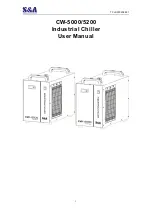
15
PRESEEDER OPERATION
NOTE:
When clearing an area with exces-
sive rocks, adjust rotor depth so it just
touches soil surface, then proceed to work
and windrow rocks.
NOTE:
Rock windrows should be picked
up before they become too large.
Large
windrows affect performance and cause
premature wear of the Preseeder tiller.
The adjustable angling feature of the tiller
provides added efficiency when clearing an
area. By reversing the angle, it is possible to
continue moving rocks toward the collection
area, while traveling in either direction.
2.
TILLING
is the main operation the
machine performs. Experience will give
the operator a feel for the best setting to
use. Excessive depth can cause rock
jamming.
In rocky conditions the tiller should be set
at a shallow working depth for more effi-
ciency. When there is a build-up of soil in
front of the rotor, the soil build-up prevents
rocks from being discharged away from the
rotor and thus the machine jams much
more readily. It is more efficient to make
an extra pass at a shallower setting.
Overloading can be caused by an object
such as a rock or root caught in the
machine or by tilling too deeply in heavy,
wet soil. Release clutch immediately when
belt slippage occurs.
3.
LEVELING
occurs during the tilling
process. Deeper rotor depth produces the
best leveling. More shallow settings pro-
duce the smoothest seedbed.
When possible, it is best to work along con-
tours rather than across them. The leveling
function will cut off ridges and fill in valleys.
The operator may choose to angle the rotor
parallel to the tractor axle to gain maximum
leveling. However, when the rotor is straight
(See Figure 26), rocks will not discharge to
the side. All dirt and rocks gather in front of
the rotor.
The operator should be careful
not to overload the tiller when the rotor is
in this position.
Learning to operate your tiller properly will
allow you to get the most efficient use from it
with minimal downtime. By keeping the follow-
ing points in mind, you will be able to work
more effectively and efficiently.
Survey the area:
Take a few minutes to
walk around the jobsite. These few minutes
are time well-spent because you can:
1.
Plan a strategy
. Ask yourself some
questions about doing the job most effi-
ciently. Where are the highest points on
this job? Where are the lowest? Where
should I start? Where should I deposit
the rocks? These are the types of ques-
tions that you should ask yourself before
starting each job.
2.
Look for obstructions
. Walk around the
jobsite to spot the enemies of your tiller.
These enemies include: roots, steel
strapping, rope, wire, plastic wrapping,
or anything that may hinder or damage
your machine. Remove these enemies
before you start operating. Also, look
for permanent objects that may often be
buried or hidden on jobsites. These
include: drainage pipe, electrical wiring,
sewer vents, well covers, concrete slabs,
etc.
Be aware of electrical wires
or pipes which may have a
shallow cover of earth.
3.
Prepare for final clean-up
. Clean-up is
made easier when you choose an area
beforehand that is better for gathering
and cleaning up rocks. Areas that are
close to your trucks, on solid ground,
along a street or grass-covered are ideal
for depositing rocks and debris. Work
the final windrows towards this area.
SECURING THE MACHINE
Summary of Contents for Preseeder 365
Page 1: ......
Page 2: ......
Page 9: ...FIGURE 1 Decals 3 SAFETY PRECAUTIONS ...
Page 11: ...5 GENERAL ARRANGEMENT FIGURE 4 Preseeder Landscaping Tiller General Arrangement ...
Page 29: ...23 NOTES ...









































